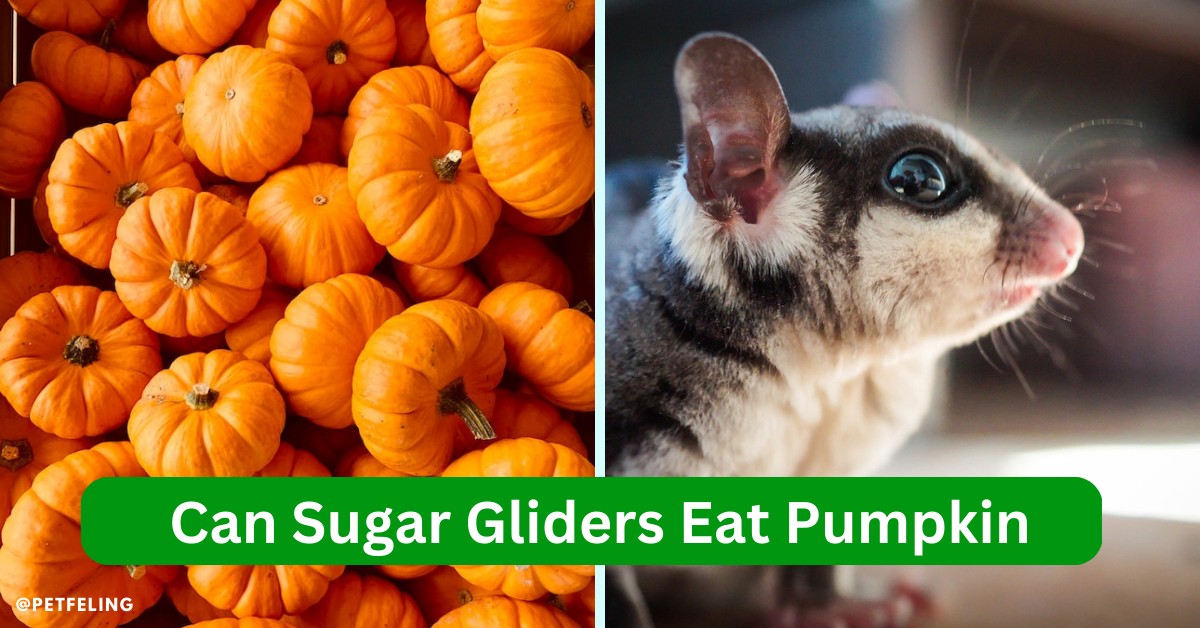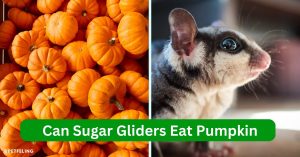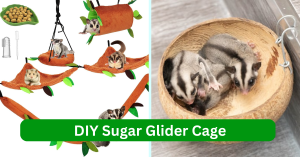Although sugar gliders aren’t normally renowned for eating seeds, they could be able to if given the right introduction. Pumpkin seeds may be enjoyed by certain sugar gliders, but it is recommended to introduce them gradually to minimize any possible health risks.
Introduction
Sugar Gliders, Small, furry mammals are native to Australia and New Guinea. The only gliders that consume seeds are sugar gliders. Although sugar gliders eat a wide variety of foods, they particularly enjoy pumpkin seeds. Protein and other vital nutrients can be found in abundance in pumpkin seeds. They also contain significant amounts of fiber, magnesium, and zinc. Because pumpkin seeds are a good source of these nutrients, sugar gliders adore them. Although sugar gliders eat a wide variety of foods, they particularly enjoy pumpkin seeds. Sugar gliders adore pumpkin seeds because they are rich in these nutrients and a wonderful source of protein and other essential elements.
Nutritional breakdown of Pumpkin?
Pumpkin includes the following nutrients in a 100g serving and additionally, it is a good source of vitamin A, potassium, and C.
- 26 – Calories
- 0.2 g – Total Fat
- 0 g – Saturated Fat
- 0 mg- Cholesterol
- mg – Sodium
- 6 g – Total Carbohydrates
- g – Dietary Fiber
- g – Sugar
- 1 g – Protein
Is Pumpkin healthy for sugar gliders?
For sugar gliders, pumpkin can be a beneficial component of a balanced diet. Because they are omnivores, sugar gliders need a broad diet that includes a variety of fruits, vegetables, and proteins. The nutrients fiber, vitamin C, potassium, and vitamin A are all rich in pumpkins. It’s crucial to remember that pumpkin shouldn’t be served as the primary source of food, only in moderation. In order to make sure that sugar gliders’ nutritional requirements are met, it is also crucial to take into account their particular dietary demands and consult a veterinarian.
Can Sugar Gliders Eat Pumpkin?
Yes, pumpkin can be eaten by sugar gliders. Sugar gliders must have a balanced diet that contains a variety of fruits, vegetables, and lean protein because they are omnivores. Pumpkin, which contains fiber, vitamin C, potassium, and vitamin A, can be a nourishing addition to their diet.
Do Sugar Gliders like eating Pumpkin?
Depending on the sugar glider, different sugar gliders may like different foods. While some sugar gliders could be interested in eating pumpkin, others might not. Before introducing a new item to your sugar glider’s usual diet, it is always a good idea to introduce it gradually and in small amounts to observe how your sugar glider responds. Even though sugar gliders like pumpkin, it shouldn’t be the only meal you give them because they are omnivores and require a varied diet that contains a combination of protein, fruits, and vegetables.
Can Sugar Gliders Eat Pumpkin peel?
Pumpkin peel can be consumed by sugar gliders, but it must first be well cleaned and decontaminated of any pesticides and pollutants. The fiber-rich pumpkin peel can offer your sugar glider some nutritional advantages. Pumpkin peel, however, can also be hard and challenging for your sugar glider to digest; therefore, it is advised to serve it in modest amounts and watch how they respond.

Can Sugar Gliders Eat Pumpkin Seeds?
Pumpkin seeds are indeed edible to sugar gliders. Pumpkin seeds are a good source of iron, magnesium, zinc, and healthy fats in addition to protein. It’s crucial to remember that pumpkin seeds should only be consumed in moderation because they are high in fat and, if consumed in excess, can lead to weight gain. In addition, pumpkin seeds should be free of seasonings and unsalted.
Can Sugar Gliders eat Raw Pumpkin?
Sugar gliders can consume raw pumpkin. Raw pumpkin can be a wholesome addition to a sugar glider’s diet because it is a good source of fiber, vitamins, and minerals. The pumpkin should be carefully washed and served in moderation as part of a healthy diet that also includes a variety of fruits, vegetables, and lean proteins. In order to make sure that raw pumpkin is suitable for your sugar glider’s diet and to establish the proper serving amount.
Can Sugar Gliders Have Cooked Pumpkin?
Yes, cooked pumpkin is suitable for sugar gliders. A sugar glider’s diet can benefit from adding cooked pumpkin because it contains fiber, vitamins, and minerals. Make sure the pumpkin is cooked all the way through and is devoid of any condiments or spices. Additionally, it’s crucial to include cooked pumpkin in moderation as part of a diet that includes a variety of fruits, vegetables, and lean proteins.
It is a good idea to provide both and check which your sugar glider prefers because some might prefer cooked pumpkin while others might prefer it raw.
How Often Should Sugar Gliders Be Fed Pumpkin?
Several factors, including a sugar glider’s age, weight, activity level, and general health, determine how frequently pumpkin should be provided to it. Pumpkin should be included in a balanced diet that includes a variety of proteins, fruits, and vegetables in moderation. Offering a small amount of pumpkin (1-2 tablespoons) a few times per week is a typical recommendation. Keep an eye on your sugar glider’s weight and general health, and alter the quantity and timing of pumpkin feedings as necessary.
How to feed pumpkins to Sugar Gliders?
Follow these methods to feed sugar gliders pumpkins:
- Make sure the pumpkin is clean and free of any chemicals or pesticides by giving it a good wash.
- Cut the pumpkin into bite-sized pieces so that your sugar glider can easily consume them.
- If you’re giving pumpkin flesh, make sure to remove the seeds first.
- Offer the pumpkin in moderation as a treat or as a tiny component of their meal as part of a balanced diet that also includes a variety of fruits, vegetables, and proteins.
- Offering the pumpkin in little doses at first and watching your sugar glider’s response can help you understand how they will respond. If they seem to like it and don’t respond negatively, you can give it to them more frequently.

Other Concerns About Sugar Gliders Eating Pumpkin
To protect the health and welfare of sugar gliders, it’s crucial to keep a few things in mind when feeding them pumpkin. First of all, pumpkin should be included in a balanced diet that includes a variety of proteins, fruits, and vegetables and should be served in moderation. When introducing pumpkin to a sugar glider’s diet, it’s critical to pay attention to how they react because some of them may develop an allergy or sensitivity to it. The pumpkin should also be completely cleaned and devoid of any chemicals or pesticides. Additionally, as mold can be poisonous to sugar gliders, it is imperative to avoid feeding pumpkin that has begun to spoil or contains mold. Finally, due to their high fat content, pumpkin seeds should be served unsalted and in moderation. Do you now wonder if sugar gliders can eat Bananas?
Conclusion
You now have a thorough understanding of sugar gliders and their preferred fruit. Fruit comes in so many varieties that you can feed it to these animals. A regular component of your sugar glider’s diet will be fruit. It frequently consumes fruits like cucumbers, grapes, and bananas. Just keep in mind to only sometimes feed fruit to sugar gliders. According to legend, one tablespoon of fruit should be offered to a sugar glider each night in so many varieties that you can feed it to these animals. A regular component of your sugar glider’s diet will be fruit. It frequently consumes fruits like cucumbers, grapes, and bananas. Just keep in mind to only sometimes feed fruit to sugar gliders. According to legend, one tablespoon of fruit should be offered to a sugar glider each night. Give the sugar glider various kinds of fruit to mix things up. Make sure to keep it as joyful and wholesome as you can. Give figs and pears to sugar gliders sparingly. Blackberries, raspberries, and strawberries are likewise off limits to them. You shouldn’t have any trouble caring for sugar gliders if you keep all of this in mind. Your sugar gliders will be content in your care, and you’ll have a fun time doing it.
FAQ Section
What foods should sugar gliders avoid?
Chocolate.
Dairy.
pesticide-treated food products
fruits, including blackberries, raspberries, and strawberries.
pears and figs, among other fruits.
vegetables like beets and carrots.
What food kills sugar gliders?
Never give gliders tap water because its toxins, such as fluoride and chlorine, can be harmful. Always use bottled drinking water or spring water. Avocado, Brussels sprouts, cauliflower, leeks, lettuce and other greens, peas, turnips, and garlic are some additional veggies that could be harmful.



